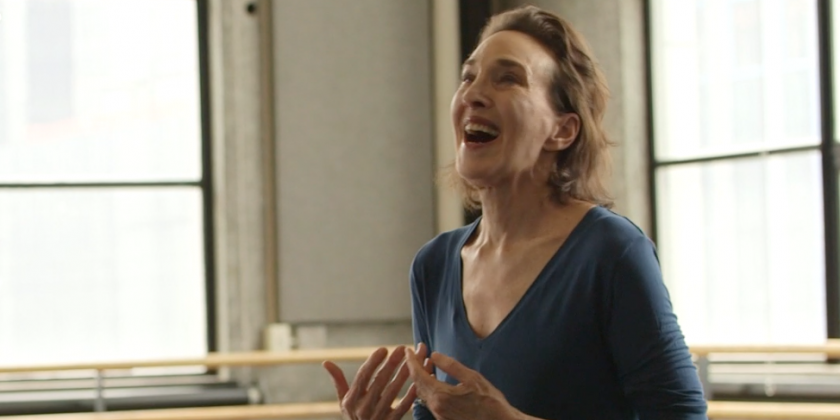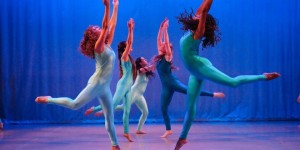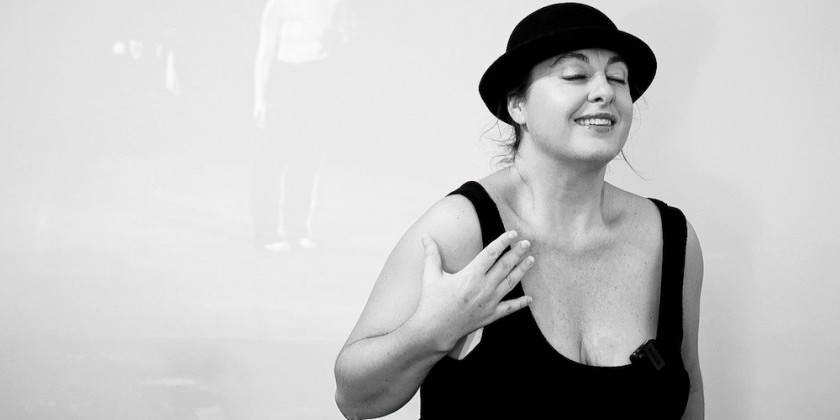THE DANCE ENTHUSIAST ASKS: Lori Belilove of the Isadora Duncan Dance Company about Dancing Joy and Duncan's Legacy in the 21st Century

Lori Belilove and the Isadora Duncan Dance Company
Untermyer Gardens in Yonkers
September 25, 2021, at 5 p.m.
For tickets and more information, go HERE
Modern-dance pioneer and revolutionary Isadora Duncan is making a big comeback in the 21st Century, and Lori Belilove is a big reason why. She has spent a lifetime absorbing Isadora’s legacy, learning directly from first-generation Duncan dancers. As a dancer, choreographer, teacher and director, she has kept Duncan Dance alive by building on it—drawing on other disciplines, notably ballet, Doris Humphrey’s modern technique, and the Dalcroze Method of musicality in movement.
Belilove is the founder and director of the Isadora Duncan Dance Company, as well as a children’s troupe, “The Belilovables”—a re-invention of Duncan’s “Isadorables.” We talked with her at her studio and home in the heart of New York’s Chelsea neighborhood, where she lives with her husband and artistic collaborator, John Link.

Tom Phillips for The Dance Enthusiast: What’s the secret of Duncan dancing? How is it different from other schools and styles?
Lori Belilove: It’s almost a way of being, a sense of your physical self that doesn’t leave anything behind, and you don’t hide behind technical feats. It’s presence and state of mind. Unlike other dance styles, we initiate movement from the solar plexus—which Duncan called the “mirror of the soul”—and use the breath as the nucleus of movement, letting action stem from the breath itself.
We’re talking about a choreographer who worked 100 years ago. Very little choreography of that era survives today. What makes Isadora relevant now?
LB: If it moves you, it has validity. I mean, does Chopin move you? Some of her dances are a bit ingenue, and that’s okay, because it’s youth. If it’s done right, if it’s done by a Hayley Rose, it is gorgeous. What's old is now new; it always cycles. I want to rejuvenate, to revive, to purify it—to get away from anything dusty and historical, any kind of replication. Why am I here in 2021 doing Duncan? Because, simply, I love it and feel very contemporary dancing Duncan.

You're also adding some new elements, for example, men. Isadora’s dancers were all white, and all-female. But it doesn't have to be that way.
LB: Of course not, and that's a point of frustration for me. There is something wrong with this picture. One of my students is a professor now, teaching in Tennessee. Most of her students are Black, and she is introducing them to Duncan. This is Hallelujah.
I’ve been in New York City schools; I teach at Ailey and the local YMCAs. I recently taught at the Frank Sinatra School of the Arts, and the dancers all just wonderfully embraced the work. Now I have to track them down and see why they didn't call me back after the summer! Economics and difficult situations may be part of it.
Sometimes I get African-American dance artists who snub their nose at Isadora, and they're giving the work a bad rap. But maybe I just need to show them. They need to see. I have my work cut out for me.
Getting to meet your dancers was delightful. They’re not competitive; they were friendly to each other and to outsiders. They’re very open. How do you pick them?
LB: Ha! I don’t insist they be vegetarians or wear all cotton, for instance. But if you’re a smoker, don’t bother auditioning. I look for how they take care of themselves. Do they show up on time? Do they have a little bit of self-love? We need to cultivate that. Because it comes out in the dancing.

Isadora had visions that her dancing could save the world. How does Duncan dance fit into the world today?
LB: Well, if more people did it, it might be a happier world. Isadora said, “I don’t teach dance. I teach joy.”
But it’s not just doing it, it’s also seeing it. The writer Floyd Dell said, "To have seen Isadora Duncan dance is to die happy.” That almost says it all.
So what’s coming up for the Isadora Duncan Dance Company?
LB: On September 25th we’re doing a program of Duncan classics and new dances at the Untermyer Gardens in Yonkers, where Isadora’s dancers performed in 1932. It’s outdoors in a classic Greek-style amphitheater, surrounded by nature—the perfect setting.













